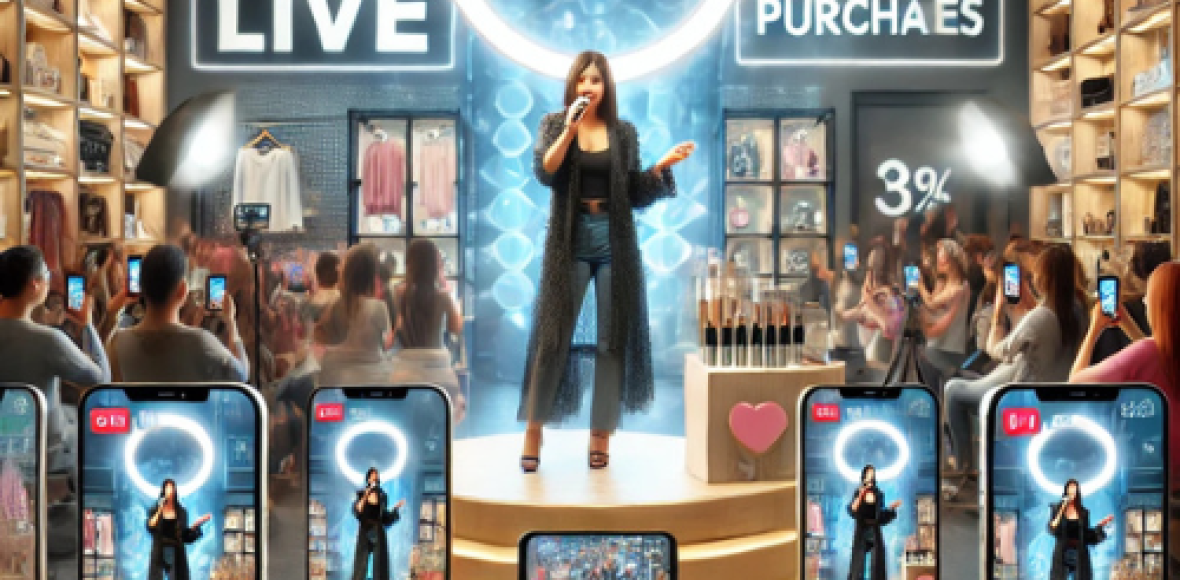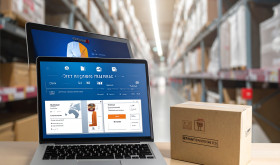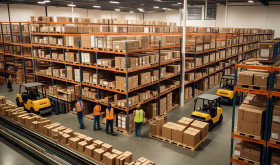
The e-commerce scene is changing fast, and live shopping stands out as one of the most groundbreaking trends. This concept, which began as a small-scale idea in China, has grown into a key sales platform worldwide. Live shopping has an impact on brands big and small giving them the power to show off products as they happen, chat with buyers right away, and spark spur-of-the-moment buys.
Businesses like TikTok Shop, Whatnot, FaceBook Live, Instagram Live, and YouTube Live have put a lot of money into live shopping proving it’s not going away anytime soon. The potential is huge, but companies need to tackle some tricky tasks to grow big. They must handle orders as they come in, keep track of what’s in stock, ship things out, and deal with returns. These things are key to making live shopping work long-term.
This is why an Order Management System is so important for live shopping to run well. A strong Order Management System makes sure orders go through without a hitch, keeps tabs on what’s in stock, and gets things sent out. This lets businesses sell stuff and get it to customers without any problems.
The Rise of Live Shopping: How It’s Shaking Up Online Stores
Live shopping has a transformative effect on online retail combining entertainment, interaction, and quick buying. This approach differs from standard e-commerce in several keyways:
- Real-time interaction: Shoppers can pose questions and ask to see products in use before they buy.
- Instant buying: Customers don’t need to search a website—they can add items to their cart and complete purchases right away.
- Authenticity and trust: Watching a product in use helps reduce buyer uncertainty and boosts sales.
- Wide reach without ad costs: Brands can connect with audiences on TikTok, Instagram, and Whatnot without spending money on pricey advertisements.
Why Live Shopping is Growing Fast
✔ 50% of TikTok users have bought a product after watching a live stream.
✔ Whatnot had 8.5M website visits in January 2025 alone.
✔ Brands are earning six figures in a single live shopping session.
With cheaper customer acquisition better conversion rates, and more engagement live shopping has a strong impact on e-commerce.
Problems in Growing Live Shopping Without an Order Management System
While live shopping offers big money-making chances, it also brings serious operational issues. Without a solid Order Management System, brands face problems like:
❌ Overselling & Inventory Mismatch Live shopping moves —hundreds of people might add the same product to their cart at once. If inventory doesn’t update right away, businesses run the risk of selling too much, which can lead to upset customers and orders being cancelled.
❌ Slow Order Processing Live shopping succeeds when it gives people what they want right away. If a business takes too long to confirm, pack, and send out orders, customers might lose faith and choose to buy from other sellers who can get things to them faster.
❌ Messy Order Flow Across Different Channels Many brands sell on several live platforms—TikTok Shop, Instagram Live, Facebook Live, and third-party apps. Without a central system, handling orders from various sources can turn into a mess and lead to mistakes.
❌ Tricky Returns & Exchanges Live shopping pushes people to buy on a whim, which can result in more returns. If returning and exchanging items is a hassle, businesses might face unhappy customers and lost money.
How an Order Management System Boosts Live Shopping Success
An Order Management System has a vital role in live shopping operations. It helps companies grow and provide great service to customers.
- Up-to-Date Inventory Tracking Stops Overselling
A good Order Management System works with all live shopping platforms and keeps inventory current. When someone buys a product during a livestream:
✅ The system updates stock numbers on every platform right away.
✅ It checks if the item is in stock before it confirms an order, which stops overselling.
✅ The system can tell the host if stock is low, so they don’t disappoint buyers.
This careful tracking makes sure stock numbers match up and are correct.
- Automated Order Processing to Fulfill Orders Faster
Live shopping orders flood in and in large numbers. An Order Management System has an impact on order processing automation by:
✅ Capturing orders from multiple platforms into a single dashboard right away. ✅ Checking payment and customer details .
✅ Sending orders to the closest fulfillment center to pack and ship .
With automation, businesses can cut down on manual mistakes and get products out the door faster making customers happier.
- Centralised Order Management Across Multiple Live Channels
Many companies market their products on several live platforms (TikTok Shop, Instagram Live, YouTube Live Whatnot). Without an OMS, handling orders from various sources can cause logistical headaches.
An Order Management Syste brings together all live shopping orders in a single dashboard, enabling businesses to:
✅ See, monitor, and handle every order as it happens.
✅ Distribute inventory and shipping tasks according to order numbers.
✅ Simplify after-sales processes like returns and swaps.
This unified method clears up confusion and maintains productive and expandable operations.
- Smooth Connection with Warehouses and 3PL Providers
To ship live shopping orders, companies need to improve their supply chain and storage processes. An Order Management System connects with storage facilities and external shipping companies allowing:
✅ Orders to go to the nearest storage facility for quicker shipping.
✅ Better shipping choices cutting expenses and delivery duration.
✅ Up-to-date order status, so buyers can check their purchases right after buying.
This makes sure that live shopping buys get to customers fast and well boosting their faith and making them buy again.
- Easy Returns & Swaps
When people buy on impulse during live shopping, they often return more stuff. A clever Order Management System makes returns and swaps simpler by:
✅ Automating the approval of returns and creating return labels.
✅ Giving customers the option to return items in-store (BORIS – Buy Online, Return In-Store).
✅ Connecting return data with inventory to **restock products more **.
When businesses make returns simple, they can keep customers and cut down on lost income.
- Using Data to Improve Live Shopping Plans
An Order Management System does more than handle orders—it gives useful data insights to help brands fine-tune their live shopping plans. Companies can keep tabs on:
📊 Products that sell best during live streams.
📊 Times when live shopping events get the most attention.
📊 How customers buy and what they like.
📊 How well orders are filled and where to get better.
By looking at this info, brands can adjust stock, prices, and deals to make the most money from live shopping.
Why Brands Need an Order Management System to Do Well in Live Shopping
As live shopping keeps expanding, brands that put money into well-organized order handling will gain a big edge. A strong Order Management System gives companies the ability to:
✅ **Grow live shopping ** across many platforms.
✅ Stop overselling and stock problems by syncing inventory in real time.
✅ Handle orders right away to meet what customers expect.
✅ Ship faster and make returns easier making shopping better for customers.
✅ Get valuable data to keep improving how live shopping works.
Without an Order Management System, businesses risk messy operations missed sales, and unhappy customers. On the flip side, live shopping that uses an Order Management System can grow , and is set up for success in the long run.
The Future of Live Shopping is Here—Are You Ready?
Live shopping isn’t just a fad anymore—it’s shaping e-commerce’s future. As platforms like TikTok Shop, Instagram Live, and Whatnot grow, businesses need to keep up with real-time selling’s quick pace.
By using a strong Order Management System, brands can handle live shopping orders without a hitch, make fulfillment better, and give customers great experiences—setting themselves up for long-term success in the thriving live commerce world.
Are you ready to future-proof your live shopping operations?










